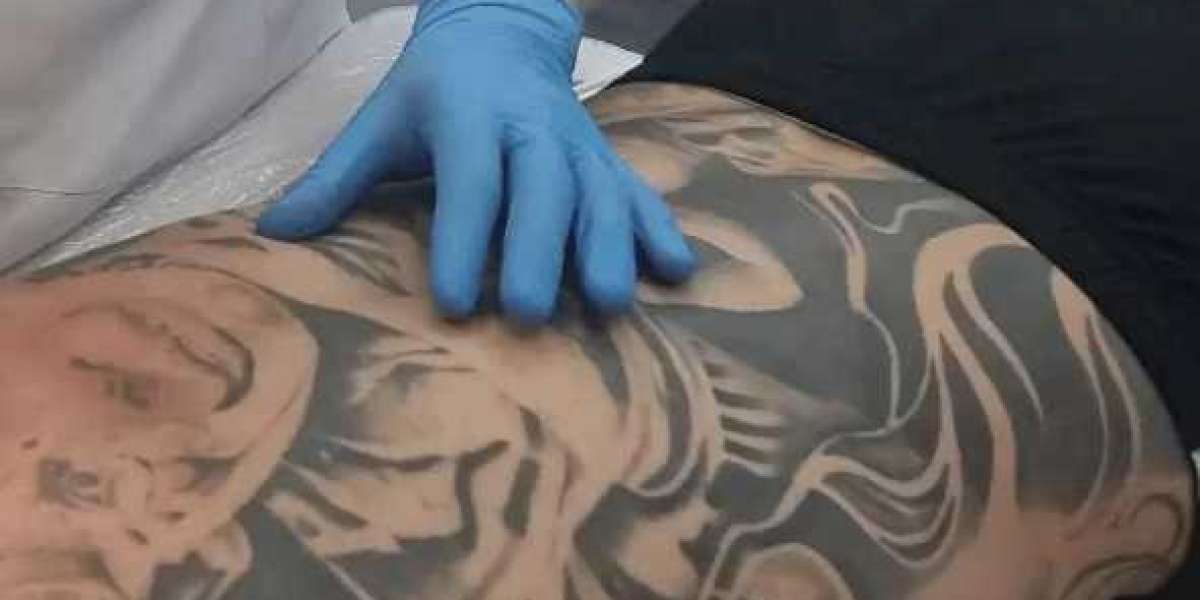Laser tattoo removal has become the most popular method for getting rid of unwanted tattoos. It works by using high-intensity light beams that break down the ink particles under the skin. Over time, the body’s immune system flushes out these fragments, resulting in the fading or complete removal of the tattoo. While this process is generally safe and effective, many individuals wonder whether it can lead to scarring. It's a valid concern, especially for those seeking a clean slate without compromising the appearance of their skin.
How Laser Technology Interacts with the Skin:
The most commonly used type of Laser Tattoo Removal in Dubai (إزالة الوشم بالليزر في دبي) is the Q-switched laser, which delivers short pulses of energy that specifically target tattoo ink without harming the surrounding skin. The wavelengths are chosen based on the ink color being treated. This precision reduces the likelihood of damaging healthy skin tissue. However, because everyone’s skin is different and tattoos vary in composition and depth, the results can vary. In most cases, if proper protocols are followed and aftercare is prioritized, the chances of scarring are minimized.
What Causes Scarring After Laser Tattoo Removal?
Scarring is not typically caused by the laser itself but rather by external or internal factors that affect the healing process. These can include improper aftercare, pre-existing skin conditions, or infections that occur after treatment. Picking at scabs or exposing the area to sun without protection can also increase the risk of permanent marks. Moreover, if the tattoo was applied deeply or involved traumatic skin injury during application, the skin may already be compromised, making it more susceptible to scarring during removal.
Identifying the Difference Between Scarring and Other Skin Reactions:
It’s important to distinguish between normal post-laser reactions and actual scarring. After treatment, temporary side effects like redness, swelling, blistering, and scabbing are expected. These usually subside within days or weeks, depending on the individual. True scarring, however, is characterized by changes in skin texture—such as raised, pitted, or discolored areas—that remain long after healing. Understanding this difference can help set realistic expectations and guide proper post-treatment care.
Preventive Measures to Avoid Scarring:
A significant factor in avoiding scars is following a strict aftercare regimen. This includes keeping the treated area clean, moisturized, and protected from sunlight. Avoiding physical irritation, such as tight clothing or excessive movement over the area, also helps. Individuals should refrain from scratching or peeling the skin as it heals. Hydration, healthy nutrition, and avoiding smoking can further support skin regeneration. All these practices work together to ensure the skin recovers properly after each session.
The Role of Skin Type and Tattoo Characteristics:
Some people may be more prone to scarring based on their skin type or the nature of their tattoo. Those with darker skin tones may experience changes in pigmentation (hyperpigmentation or hypopigmentation) that can mimic scarring but are usually temporary. Tattoos with dense, layered, or multi-colored ink may require more sessions, increasing the risk of skin irritation. Similarly, tattoos in areas with thinner or more delicate skin—like the neck or ankles—may be more susceptible to damage during treatment.
When Scarring Does Occur: Treatment Options
If scarring does occur despite best efforts, there are treatment options to improve the skin's appearance. Topical silicone gels, laser resurfacing, microneedling, and chemical peels can help reduce the visibility of scars. In some cases, scar revision techniques may be considered. These methods aim to smooth out raised tissue or even out discoloration, helping to restore the skin’s texture. However, any additional treatment should only be pursued after full healing from laser removal is complete.
Final Thoughts:
Scarring is a possibility, it is not the norm for most people undergoing Laser Tattoo Removal in Dubai (إزالة الوشم بالليزر). With advancements in laser technology, refined techniques, and proper aftercare, the likelihood of permanent scars is greatly reduced. For those considering tattoo removal, the key to success lies in patience, informed decision-making, and skin-conscious habits throughout the process. When done correctly, laser tattoo removal offers a chance to start fresh—with skin that’s not only ink-free but also healthy and scar-free.








